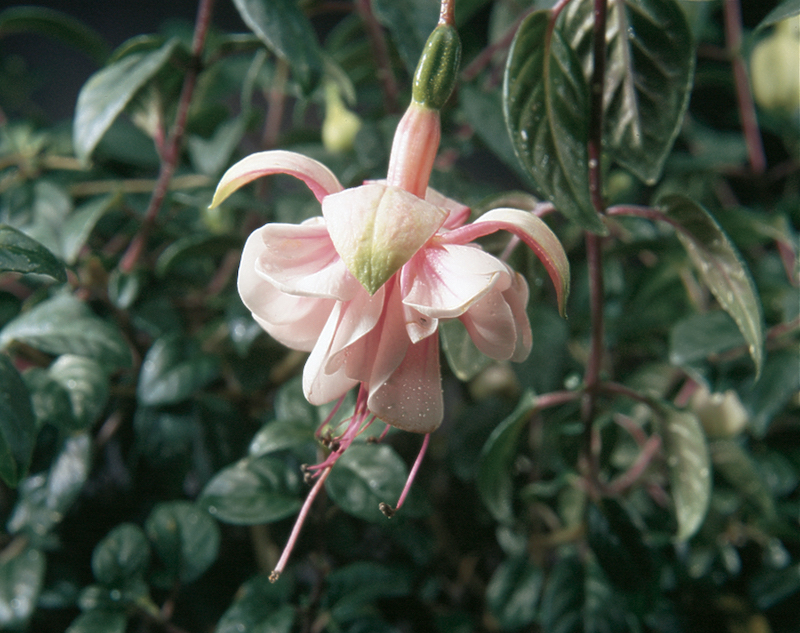Fuchsia is the type of plant that deer will browse on. Hybrid Fuchsias have large, attractive flowers that are like candy to a passing deer. The hardy species types, such as Fuchsia magellanica or Fuchsia boliviana, tend to be avoided by deer due to their smaller flowers and woodier structures. Mature fuchsia will tolerate light browsing and grow back fairly quickly. Fuchsias grown as tender perennials and planted in the ground may be more likely to be eaten during the fall and winter months when other plants may not be available.

Keeping Deer Away From Fuchsia
Sprays and repellents such as Plantskydd or Safer brand Liquid Fence will provide a temporary solution until the plants have grown and matured. The sprays must be reapplied after heavy rains or overhead watering. Some products that have proven effective are granular systemic formulas that wash into the soil and are taken up by the root system. The bittering agent will not harm the deer but will make the plants inedible. Repellex Systemic Animal Repellent is effective for container-grown plants and only has to be applied once a season.
Growing Fuchsias in pots and placing them close to the house or in areas with regular foot traffic will also deter deer from browsing. Temporary covers of stakes with bird netting draped over the top are practical and quick barriers for Fuchsia growing in the garden. The bird netting can be taken off as the Fuchsia grows to its mature size and blends into the garden easily.

Will Fuchsia Come Back After Deer Eat Them?
Fuchsias are rapid growers and are not bothered by deer browsing. The plants may be encouraged to grow bushier if the browsing is mainly at the tips of the branches. Fuchsia that has been aggressively eaten should be given a period to rest and regenerate. Regular watering and fertilizing will assist the regrowth.
Sources: Rutgers New Jersey Agricultural Experiment Station ‘Landscape Plants Rated by Deer Resistance’ 2018
 |
Author Robbin Small - Published 9-16-2022 |
